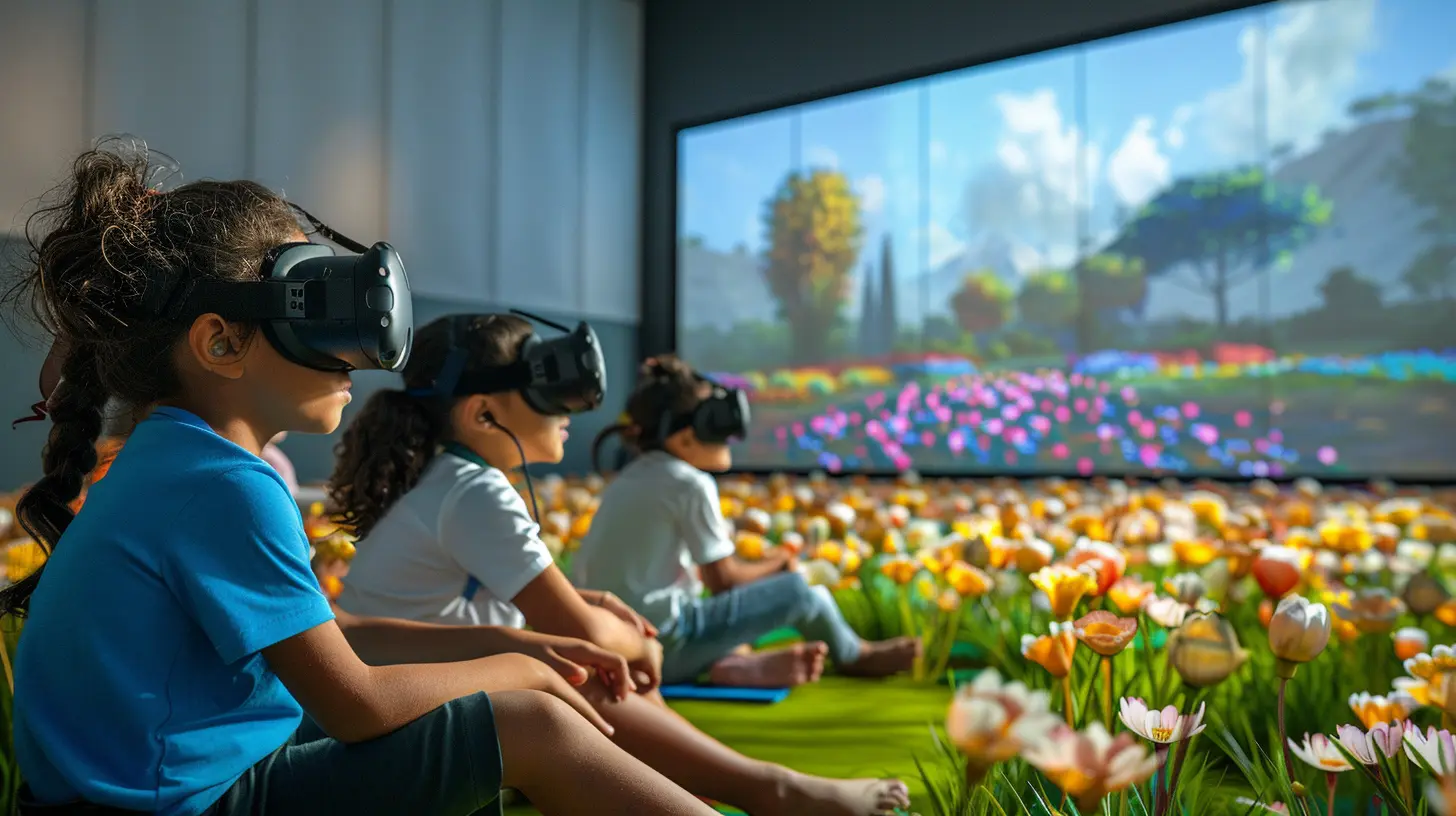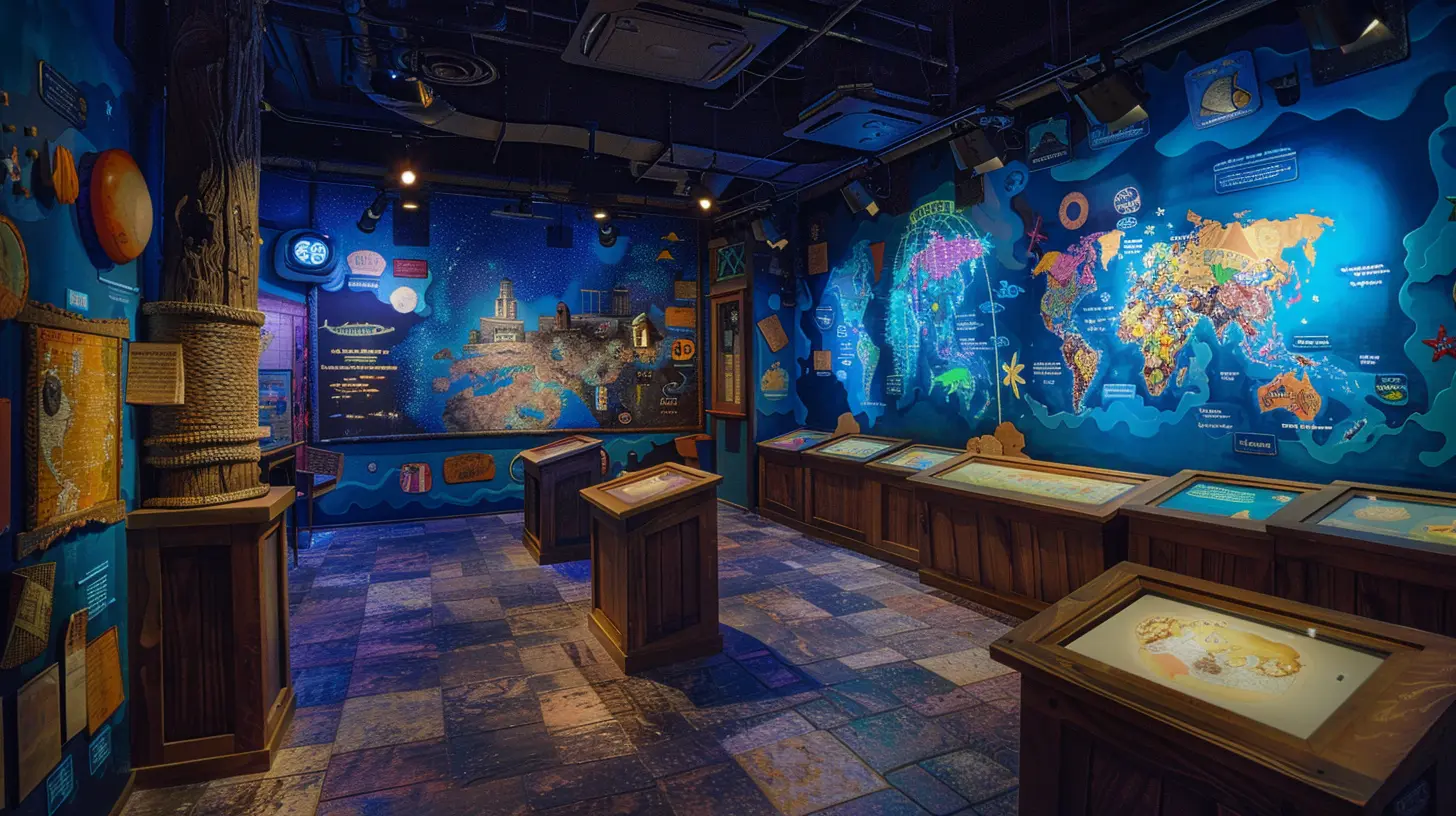3 November 2025
Let’s be honest — field trips are awesome. It’s like hitting the pause button on the usual classroom routine and diving headfirst into something new and exciting. But what if I told you those passport-worthy adventures could now happen without leaving your seat? Enter: Virtual Field Trips.
Imagine going to the Louvre without waiting in long lines or scanning the Grand Canyon without melting under the sun. Sounds cool, right? Virtual field trips are the magical portals that let students travel the globe (and beyond) with just a click. And the best part? There are tons of ways to make them interactive, meaningful, and, dare I say, unforgettable.
In this article, we're going to break down this futuristic-yet-here educational tool and load you up with ideas and inspiration. Ready for take-off? Buckle up, because this journey might change the way you think about "field trips" forever.
What Exactly Are Virtual Field Trips?
If you're picturing a Zoom call with someone in khakis pointing at trees — think again.A virtual field trip (VFT) is an online experience that transports students to real or imagined locations using videos, images, audio, 360° tours, and even VR. With platforms like Google Arts & Culture, Discovery Education, and Nearpod, classrooms can now "visit" the pyramids of Egypt, the coral reefs of Australia, or even Mars — yeah, the red planet!
These aren't just glorified slideshows either. Many are interactive, narrated, and customizable to fit your lesson plan like peanut butter fits jelly.
Why Teachers Are Loving Virtual Field Trips
Let’s cut to the chase: organizing real-life field trips is often a logistical nightmare. Between permission slips, transportation, budgets, and group snacks (someone always forgets the granola bars), it’s a lot. Virtual field trips swoop in like educational superheroes and save the day.Here’s why teachers are jumping on the VFT train:
- 🚍 Zero Bus Rentals: No buses = no motion sickness complaints.
- 💰 Budget-Friendly: Most are free or low-cost. Your wallet will thank you.
- 🌐 Global Access: From Antarctica to the Amazon, no location is off-limits.
- 🧠 Flexible Learning: Great for synchronous (live) or asynchronous learning.
- 💡 Engagement Galore: Hello, interactivity! Goodbye, glazed eyes.
Still not convinced? Let’s dive deeper into the benefits.
The Awesome Benefits of Virtual Field Trips
1. Accessibility for All
Traditional field trips can leave some students out due to physical limitations, financial constraints, or parental restrictions. Virtual experiences level the playing field. Everyone, regardless of background or ability, gets to participate.2. Safe and Secure Exploration
No need to worry about headcounts, weather conditions, or emergency contact info. These trips are safe, secure, and always return on time.3. Aligned with Curriculum Goals
Virtual trips can be tailored to support what you're teaching. Studying ancient Rome? Fly your class there virtually. Learning about ecosystems? Dive into a rainforest experience. The educational world is your oyster.4. Instant Replay Value
Students can revisit the experience anytime — perfect for review or deeper exploration. It's like having a rewind button for their learning journey.
Planning the Perfect Virtual Field Trip: Tips and Tricks
Okay, you're sold. But how do you make this new-age field trip actually work in a classroom? Here's a handy cheat sheet:✅ Choose the Right Platform
Look for engaging, age-appropriate content. Some solid options:- Google Arts & Culture – Museums, landmarks, and cultural sites.
- National Geographic Education – Environment, geography, animals.
- Discovery Education Virtual Field Trips – Broad topics with lesson plans.
- Nearpod VR – 360° experiences embedded in interactive lessons.
✅ Prep Like You Would for a Regular Trip
Just because there’s no bus doesn’t mean there's no prep. Set intentions early:- What’s the learning objective?
- How will students interact? (Guided questions, scavenger hunt, sketches?)
- What’s the follow-up activity?
✅ Make It Interactive
Nobody wants to stare at a screen in silence. Bring the experience to life:- Pause and discuss.
- Encourage questions.
- Throw in quizzes or challenges.
- Use shared docs or digital whiteboards for reflections.
Think of yourself as the virtual tour guide — you’ve got the mic, so keep it lively.
Super Fun Related Classroom Activities
Now here’s where things get even more interesting. The virtual trip is just the beginning. The real magic? What your students do with that experience. Let's break it down by subject.📝 Language Arts
- Field Trip Journals: Have students write a travel diary entry as if they visited the place IRL. Encourage sensory details. What did they "see," "hear," "smell"?- Creative Writing Prompts: "You woke up and found yourself inside the Great Wall of China…" Let imaginations run wild.
- Virtual Pen Pals: Pair up with another class that took the same virtual trip and exchange thoughts via email or Flipgrid.
🧮 Math
- Measurement Mysteries: Estimate distances, heights, or population sizes related to the destination.- Budget the Trip: Plan a real-world budget for visiting the location. Include airfare, hotels, food, and souvenirs — hello math in action!
- Data Collection & Graphing: Create charts based on tour statistics or environmental data.
🔬 Science
- Ecosystem Analysis: Explore parts of the Amazon or coral reefs, then identify food chains or discuss conservation.- Weather Comparisons: Track weather from their virtual destination vs. local data for a week.
- Archaeological Digs (Sorta): Visit ancient dig sites online, then recreate them using play dough, sandboxes, or even shoebox dioramas.
🌍 Social Studies
- Time Travelers: Pretend it's the year 1500. Students report what they saw during their journey to a historical place.- Cultural Celebrations: Learn about a festival or tradition at the location, then recreate it with crafts, music, or food.
- Mini Museum Projects: After the trip, students build their own museum exhibit based on what they learned.
🎨 Art & Music
- Sketch the Scenery: Use virtual snapshots for perspective drawing or landscape painting.- Cultural Music Exploration: Listen to music from the region and analyze instruments or rhythms.
- Design a Postcard: Old-school snail mail meets tech — make digital or handmade postcards from the trip.
Real-Life Examples: Tried, Tested, and Totally Awesome
Still not sure how this looks in a real classroom? Here are a few true-to-life examples that might spark some ideas:- Ms. Gomez’s 4th Grade Tour of Ellis Island: After a virtual tour, students created immigration stories from the POV of families arriving in the 1900s.
- Mr. Davis' High School Science Class: Used a virtual dive into the Great Barrier Reef, then conducted a debate on marine conservation.
- Ms. Abbott’s Kindergarten Class Visit to the Zoo: Turned into animal mask crafting and a pretend safari day.
It’s proof that the only limit here is your imagination.
Overcoming Common Virtual Field Trip Fails
Let’s keep it real — tech is a blessing and a curse. What if your WiFi does the cha-cha? Or a link breaks? Or half your class stares blankly?Here’s how to avoid meltdowns:
- Test everything before the big day.
- Have a Plan B — maybe a YouTube video or a virtual tour screenshot.
- Assign prep work — like student tour guides who explain parts of the trip.
- Chunk the experience — don’t do everything in one go. Explore in parts.
Remember: mishaps happen. Embrace the chaos and adapt like the educational ninja you are.
Final Thoughts: The World Is Your (Virtual) Playground
The wonder of virtual field trips doesn’t just lie in their tech wizardry — it’s in their power to open minds, shift perspectives, and spark curiosity in ways a textbook simply can’t. Whether you’re teaching from a classroom or your kitchen table, these experiences can bring the world to your students' fingertips.So go ahead. Trade in those clipboards and chaperone lists for WiFi passwords and a good set of headphones. The future of field trips is here — and it’s ridiculously fun.
Bonus Resource List to Get Started
Here’s a quick-start pack of resources just for you:- Google Arts & Culture
- National Geographic Education
- Discovery Education Virtual Field Trips
- Smithsonian Virtual Tours
- The Nature Conservancy Virtual Trips
(Pro tip: Bookmark these!








Darby Castillo
Virtual field trips transform traditional learning, sparking curiosity and engagement. They offer diverse experiences beyond four walls, making education more dynamic—proving that adventure doesn’t require a bus, just a click!
December 11, 2025 at 11:40 AM